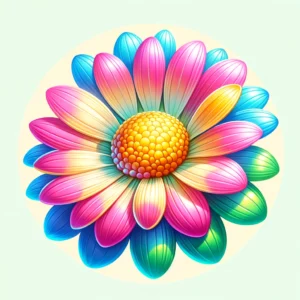🌼 Flower Emoji Meaning and Symbolism Decoded
Flowers have held deeply symbolic meaning in cultures across the world for thousands of years. Their beauty, fragrance, colors and forms have inspired myths, legends, poetry and art. It’s no surprise then that flower emojis carry rich meaning and nuance.
Understanding the symbolism and unwritten language of flower emojis allows us to imbue our digital communication with more warmth, creativity and personalized flair.
In this guide, we’ll explore the varied historical meanings and modern usage of all the floral emojis from the red rose to the cherry blossom. Let’s decode these botanically inspired symbols that add beauty and depth to our texts and social media posts.
Meanings of Common Flower Emojis
- 🌹 Red rose – Classic symbol of romance, passion, desire and beauty. Gifting it conveys deep love.
- 🌻 Sunflower – Represents happiness, loyalty, longevity. Symbol of adoration and dedicated affection.
- 🌺 Hibiscus – Tropical flower signaling beauty, fleeting joy and awakening. Widely used in Hawaii.
- 🌷 Tulip – Indicator of elegance, grace, caring and emerging or rekindled love.
- 🌸 Cherry blossom – Epitomizes spring, renewal, fragility of life and Japanese culture.
- 🌼 Blossom – General symbol of flowers, springtime, rebirth, youthfulness.
- 💐 Bouquet – Given to commemorate events and express congratulations, get well wishes, condolences.
- 🌱 Seedling – Beginning stages of life and personal growth. Also represents youth and potential.
- 🌻 Sunflower – Symbolizes devotion, loyalty, longevity. Can indicate eco-consciousness.
- 🏵️ Rosette – Stylized flower often used for accomplishments and ceremonial honors.
Origins and History of Flower Symbolism
- Ancient mythology – Gods and goddesses like Venus and Flora were associated with flowers and gardens. Specific blooms like roses and lilies feature in myths.
- Victorian floriography – In Victorian England, people communicated coded messages through floral arrangements called tussie-mussies. Different flowers conveyed distinct sentiments.
- Asian cultures – Cherry blossoms hold deep cultural significance in Asia, representing transience, renewal, beauty and mortality. Lotus flowers symbolize purity and enlightenment.
- Religious symbolism – Flowers like the rose and lily are intertwined with faith imagery of figures like the Virgin Mary in Christianity. Lotus represents divinity in Buddhism.
- Literature and art – Flowers are common metaphors describing beauty and transience of life. Greek myths featured narcissus blooms; Shakespeare’s works mention roses and violets.
- Flower power movement – Beginning in the 1960s, hippies used flowers to promulgate ideals of peace, love and resistance during protests.
Modern Usage of Flower Emojis
- Romance and courtship – The red rose emoji remains the unequivocal symbol for romantic love and desire. Flowers indicate romantic interest.
- Special occasions – Bouquets are sent digitally for birthdays, weddings, anniversaries, graduations and other celebratory events.
- Remembrance and commemoration – Flowers emojis are part of digital memorials and conveying condolences. Certain flowers signal patriotism.
- Expressing emotions – Sending flowers can convey many sentiments like happiness, care, appreciation, congratulations, well wishes and gratitude.
- Responding to media – Commenting with a flower emoji on social media or texts shows the content inspires joy, is aesthetically pleasing or touches your heart.
- Representing identity – Some users, especially women, adorn their avatars and profiles with their favorite flowers that reflect their personality.
- Symbolizing causes – Flowers associated with specific issues or groups represent them online, like cherry blossoms for Asian heritage or lotuses for mindfulness.
- Brand building – Companies that want to project an organic, ephemeral vibe often incorporate flower graphics, color palettes and emojis into their digital presence.
Deciphering the Meaning of Flower Emoji Messages
Interpreting the exact sentiment behind a flower emoji requires paying attention to:
- The type of flower – Symbolic meanings vary greatly. Roses convey romance, cherry blossoms represent transience.
- Single or bouquet – A lone bloom may indicate emerging feelings or bittersweet concepts. Bouquets symbolize commemorations and celebrations.
- Color – Red, white, yellow or pink flowers each have distinct connotations based on color symbolism.
- Accompanying words – The text and verbal context help clarify vague or ambiguous flower emoji messages.
- Relationship with sender – Intentions differ when flowers are texted from a partner, friend, family member, acquaintance or brand.
- Tone and frequency – Excessive use of flowers can undermine their meaning. But used sparingly, they add warmth and personality to digital communication.
Key Takeaways About Flower Emoji Meaning
- Flowers hold cross-cultural symbolic significance representing concepts like renewal, beauty, mortality, love.
- In the Victorian era, coded floral messages were exchanged through tussie-mussies, or small bouquets.
- Flower emojis retain these meanings digitally. Red roses signify passion, lotuses represent enlightenment, cherry blossoms evoke transience.
- Flower emojis are commonly used for romance, celebrations, commemorations, expressing emotions, reacting to media and conveying identity.
- Interpreting flower emoji meaning requires considering the specific bloom, whether it’s a bouquet, color, accompanying text, relationship with sender and tone.
- When used thoughtfully, flower emojis add beauty, personality and meaningful symbolism to digital communication.
The historic and cultural significance of flowers lends poignant symbolic power to floral emojis. Use this guide to harness that heritage and lend depth to your social media posts, texts and online messaging.
